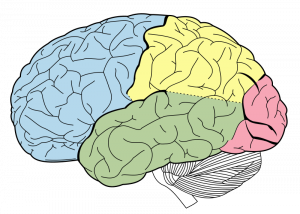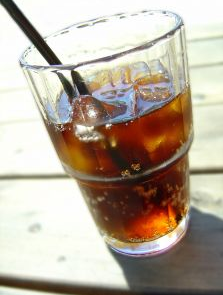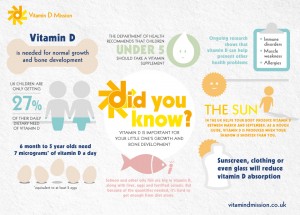
Young people in Australia have the best quality of life.
Out of 30 countries ranked in terms of youth well being, Australia takes the number one spot in a new study from the Centre for Strategic and International Studies (CSIS). The Global Youth Wellbeing Index, in conjunction with the International Youth Foundation (IYF), focused on 40 indicators in six categories to measure the quality of life for people aged between 12 and 24.
Australia
The study measured six broad categories, – education, economic opportunity, citizen participation, health, IT access, and safety & security – Australia came top in education, second in health, and fourth in terms of economic opportunity.
Despite coming top overall, Australia’s young people reported feelings of dissatisfaction with the government, and are not optimistic about their economic prospects. On an overall scale of 0 to 1, Australia scored 0.752, compared with Nigeria, the lowest ranked country with 0.375.
Recent findings have revealed 60 percent of UK parents are unconcerned about the risk of insufficient vitamin D levels in their children. These figures are worrying health experts who are concerned under-5s in the UK are not getting enough vitamin D due to the lack of awareness.
The Generation D report, commissioned by the Vitamin D Mission, reveals, despite the importance of vitamin D on early development, parents are not fully informed about the health risks associated with a lack of vitamin D.

Spot the signs of teenage depression.
Withdrawn, irritable, sleepy. This could be any teenager at some point, but these signs are also symptoms of teenage depression. “The difference between normal teen moodiness and clinical depression is very hard for lay people to discern,” says Ken Duckworth M.D., medical director of the National Alliance on Mental Illness.
Teen depression is more common than people think, according to Dr. Duckworth. It’s estimated around 11% of teenagers experience depression during adolescence. Teen depression is often overlooked as it doesn’t always present in the same way as adult depression, and a certain degree of acting out or moodiness is expected of teenagers.

1 in 5 women don’t know the warning signs of a stroke.
Public health campaigns stress the importance of identifying and treating a stroke as quickly as possible. The more time that passes the greater the likelihood of permanent damage or death. Despite campaigns to raise awareness, 1 in 5 American women can’t identify a single warning sign, according to a study published this week in the journal Stroke.
This is especially worrying as strokes are the third leading cause of death among American women and the fourth among all Americans. Strokes also affect approximately 55,000 more women than men each year.

Iceland is the best country for gender equality for the fifth year running.
The annual Global Gender Gap report has named Iceland as the best country in which to be a women, with the narrowest gap between men and women. Iceland has maintained its number one position for the past four years. Finland is in second place, with Norway and Sweden in third and fourth respectively. Fifth place was taken by the Philippines, the highest ranking Asian country.
The World Economic Forum (WEF) report looks at four ‘pillars’ when assessing the gender gap – Economic Participation and Opportunity, Educational Attainment, Health and Survival, and Political Empowerment.

Birthing centres and midwives aren’t covered by many insurance plans.
Insurance coverage for maternity care is mandatory in most individual and small group plans under the Affordable Care Act, extending this coverage where it used to be rare. However, for mums-to-be who prefer the services of midwives and birthing centres there are no guarantees.
Around 1 percent of births occur outside a hospital in the U.S. but this number is slowly increasing as more women opt for home births, birthing centres, or clinics. The number of non-hospital birthing centres increased from 170 in 2004 to 248 in January 2013. Though, at the latest count there were 13 states which still didn’t have a birthing centre at all, said the Centres for Disease Control and Prevention (CDC).
Whether working remotely for an employer or as a freelancer, working from home is often considered the holy grail of working arrangements. No more commuting, no rigid timetable, the growing number of homeworkers seem to have the best of both worlds. But who is responsible for ensuring worker safety and well-being?
Whereas traditional offices have to comply with strict regulations with regards to breaks, equipment and other safety features, homeworkers having the responsibility of creating their own environment in which to work. In this way, the potentially detrimental impact of working from home is often overlooked.

Photo by Fairfax County
For a long time, Australia has been known as the country of fit and healthy people with a love for the outdoors. During the last 20 years however, the lifestyle has changed and food has become more and more the most important part of life. It might be that the image of a sporty, healthy Australia has to be replaced in the near future.
Australia is the fourth most obese advanced-country in the world, after the United States, Mexico and New Zealand, according to the OECD ranking of 2013. Many developed countries have managed to cut obesity rates in the last few years, but Australia’s figures continue to grow. The average OECD adult obesity rate is 17.8%. Australia has an obesity rate of 24.6%, which is worrying.

Advice for first-time dads from British expat Mike Stuart.
In January we featured Mike Stuart in our post about pregnancy and birth from a father’s perspective. He was kind enough to share the story of Melinda’s pregnancy and Georgina’s birth. As a first-time dad, we asked Mike for his top tips for new fathers and he was happy to oblige!
Be as prepared as is humanly possible. In some cases, the birth will go according to plan and everyone will come home happy. For us, we did not and could not predict what lay ahead for the birth, so try to have all bases covered – even if you and your partner have your hearts set on a completely natural birth, when it comes down to it, the only thing that really matters is that your baby arrives safely.

Parents are urged to limit their children’s soft drink consumption.
Studies show carbonated soft drinks are the biggest single source of calories in the American diet, accounting for seven percent of calories – adding non-carbonated soft drinks brings the total to nine percent. Referred to as ‘liquid candy’ by public health officials, studies show most boys get 15 spoonfuls of sugar a day, and girls 10, all from soft drinks alone.
It is well known soft drinks contain a large amount of sugar, and the average American drinks about two cans per day. A single can of soda can contain as many as 10 teaspoons of sugar, this amount pushes up your blood sugar leading to a spike in insulin production. Over time, heavy consumption can trigger diabetes or insulin resistance, as well as weight-gain.

